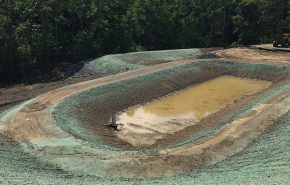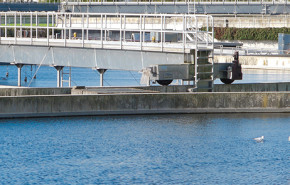GAI’s water-management team explores the core components and requirements of a water master plan that will help utilities meet a range of present and future needs.
Substantial infrastructure investment by water utilities is essential in order to keep pace with population growth, meet regulations, deliver adequate services, and protect public health and the environment. These large expenditures in order to maintain and improve water supply, wastewater management, and water reuse require that utilities create a master plan for future needs. A master plan works to define a system-wide integrated water supply, wastewater, and reuse capital improvement strategy to meet needs up to the planning horizon.
A master plan is a road map consisting of a series of programs for a utility to undertake in the short (0-to-5 years), medium (6- to-15 years) and long (16-to-25 years) terms. These timeframes are known as the planning horizon, and the programs act to guide the utility’s capital improvement projects (CIP) with respect to water, wastewater, and reuse infrastructure.
![]()
Foundations of a Water Master Plan
A master plan includes a budget and financing program for CIP implementation, focusing on capital, operation, and maintenance costs (CAPEX/OPEX), and how to generate an affordable revenue stream via user fees.
A simple road map to a successful master plan will include:
- Identification of technical elements—“What to do”
- Implementation plan schedules—“When to do it”
- Financial planning—“How to pay for it”
A master planning process consists of three major components:
- Compilation of data and data analysis
- Definition of facility needs and alternatives
- Development of the master plan
In performing a water master plan, several tasks have to be addressed in an orderly fashion:
- Performing a baseline study to analyze current conditions
- Projecting future requirements and regulations to meet planned growth
- Performing a water supply, wastewater, and reuse treatment facilities feasibility study
- Estimating future requirements to mitigate risk
- Developing a CIP
- Performing financial and economic analysis
- Creating a capital works procurement strategy
- Assessing environmental impact
Assess Present and Future Requirements
Including stakeholders in the development of a master plan is essential for both buy-in and to accurately define requirements throughout the process. Future requirements and demands to meet growth will determine the capital expenditures over the planning horizon, and therefore proper determination of those requirements is crucial for the master plan’s success. The future demands are established based on many criteria and needs as depicted in the accompanying graphic.
![]()
Hydraulic modeling of the water supply, wastewater, and reuse networks is a powerful tool for assessing existing network capacity and future expansion needs. Setting up a network hydraulic model is critical to simulate existing infrastructure capacity and future expansion to satisfy the demand over the planning horizon. Thus, a model has to be properly calibrated and verified to reflect existing conditions so it can be reliably used for simulating improvements, expansion, future capacity needs, and answering “what if” questions.
Climate change has presented significant challenges to the integrity of water resources and has placed increased risk on water infrastructure. Resiliency and robustness of infrastructure should be addressed in the master plan, particularly in geographic areas where climate change’s effect is evident in rain patterns, changes to sea levels, and drought. Water resource conservation measures should be incorporated in the water master plan, including water reclamation and reuse strategies for both indirect and direct potable needs, as well as water required for industrial, agricultural, aesthetic, landscape, district cooling, aquifer recharge, salt water intrusion barrier, and recreational uses.
Identify and Prioritize Capital Improvement Projects
![]() The CIP will identify system improvements for water supply, wastewater, and reuse infrastructure, prioritize recommended projects to meet identified objectives, and make recommendations for capital improvements to the utility’s water supply, wastewater, and reuse systems. Prioritization and ranking of the CIP projects are set based on criticality of the infrastructure based on temporal spatial factors, sometimes dictated by regulatory changes, consent order/decree, and public health moratorium. Ranking can follow criterion and weight factors set in collaboration between stake holders (see graphic). Ranking software, such as Criterium Decision Plus™ (CDP) can be used to support the decision-making process and provide visual representation of the prioritization.
The CIP will identify system improvements for water supply, wastewater, and reuse infrastructure, prioritize recommended projects to meet identified objectives, and make recommendations for capital improvements to the utility’s water supply, wastewater, and reuse systems. Prioritization and ranking of the CIP projects are set based on criticality of the infrastructure based on temporal spatial factors, sometimes dictated by regulatory changes, consent order/decree, and public health moratorium. Ranking can follow criterion and weight factors set in collaboration between stake holders (see graphic). Ranking software, such as Criterium Decision Plus™ (CDP) can be used to support the decision-making process and provide visual representation of the prioritization.
Key Takeaways
In conclusion, an integrated master plan for water supply, wastewater management, and water reuse will provide a road map for creating utility infrastructure that meets demands and other requirements, and set up a financial plan on how to pay for improvements and expansion.
One important takeaway is the knowledge that a water master plan cannot remain static—rather, it has to be updated regularly to incorporate changing real-world conditions in order for it to remain useful, relevant, and accurate, and to successfully achieve its goal of helping the water utility meet present and future needs.
Learn more about GAI’s water management services—message GAI online and start the conversation about how our multidiscipline professionals can meet your unique project needs.


